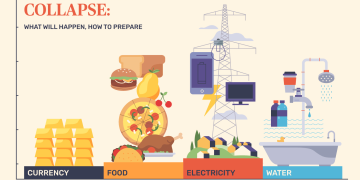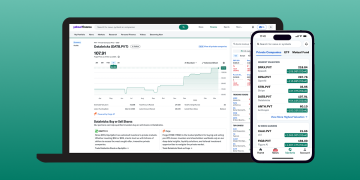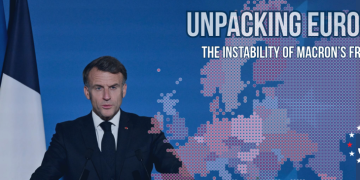Introduction: A Detailed Exploration of Cross-Border Investments Between Europe and the US, Focusing on Private Equity, Venture Capital, and Institutional Investment Flows
Cross-border investment flows between Europe and the United States have long been a cornerstone of global finance. With robust financial markets, large institutional investors, and a thriving startup ecosystem on both sides of the Atlantic, the US and Europe have developed a symbiotic relationship in which capital flows freely to seek growth, innovation, and diversification.
Over recent decades, the dynamics of these capital flows have evolved, influenced by economic cycles, regulatory changes, and shifting political climates. In 2023, as both regions face new challenges—from the post-pandemic recovery to geopolitical tensions and economic uncertainties—cross-continental investments are being shaped by a combination of longstanding market forces and emerging trends.
This article delves into the factors influencing capital flows between Europe and America, highlighting the sectors driving investment, the political and regulatory factors at play, and the potential future of these economic ties.
Investment Flows: Analyzing the Shifting Trends of Capital Flows from the US to Europe and Vice Versa
US Investments into Europe: For decades, the US has been the largest foreign investor in Europe, driven by the region’s stability, market size, and strong economic fundamentals. In recent years, however, the US investment into Europe has grown significantly in sectors like technology, real estate, and financial services. This surge is largely attributable to several key factors:
- Attractive Valuations: In comparison to the highly competitive US market, many European markets offer relatively lower valuations, making them attractive targets for US investors looking to expand globally. For example, Europe’s technology sector, especially in areas like fintech and biotechnology, has drawn increasing attention from venture capital and private equity firms.
- Monetary Policy and Low Interest Rates: The US Federal Reserve’s accommodative monetary policy in the wake of the 2008 financial crisis, and again during the pandemic, pushed investors to look beyond US borders for higher returns. Europe’s lower interest rates created an attractive environment for US capital to flow into the European real estate market, particularly in major cities like Berlin, Paris, and London.
- Post-Brexit Opportunities: The UK’s departure from the European Union opened up new avenues for US investors. While London’s status as a financial hub remains intact, US firms increasingly turned to cities like Frankfurt, Dublin, and Amsterdam for expansion opportunities. The post-Brexit shift has also prompted a significant movement of capital into European venture capital and private equity markets, targeting industries that benefit from EU-wide regulatory support, such as green energy and digital innovation.
European Investments into the US: On the flip side, Europe’s capital flow into the US has been equally robust, with European investors seeking exposure to the US’s thriving consumer markets, innovative startups, and tech-centric economy. Historically, sectors such as technology, healthcare, and consumer goods have been the primary focus of European capital in the US.
- Tech and Venture Capital: Europe’s growing venture capital market has led to significant investments in Silicon Valley, New York, and other US startup hubs. This capital is often directed toward artificial intelligence (AI), blockchain technology, and biotechnology, where the US remains a global leader in research and innovation.
- Sovereign Wealth Funds and Institutional Investors: Large European sovereign wealth funds and institutional investors have consistently increased their allocations to the US. The US real estate market, including commercial properties and residential developments, has attracted billions of dollars from European investors. Cities like New York, Los Angeles, and Miami continue to draw significant foreign investment in both residential and commercial real estate.
- Private Equity and M&A Activity: European private equity firms are also active in the US market, often acquiring established companies in sectors like manufacturing, healthcare, and finance. European firms are attracted by the liquidity and size of the US market, as well as the opportunities for cross-border mergers and acquisitions.
Political and Regulatory Factors: How Changes in Tax Policies, Regulatory Environments, and Trade Agreements Affect Investment Decisions Between the Two Regions
Tax Policies and Corporate Tax Rates: One of the most significant drivers of capital flows between Europe and the US is the tax environment. In recent years, changes to corporate tax rates and policies in both regions have influenced investment strategies.
- US Tax Reform: The Tax Cuts and Jobs Act of 2017 reduced the US corporate tax rate from 35% to 21%, making the country more attractive for both foreign and domestic investment. This change sparked an increase in foreign direct investment (FDI) into the US, particularly in industries that benefit from favorable tax treatment, such as tech and energy.
- EU Tax Regulations: Conversely, the EU’s approach to corporate taxation remains more complex, with varying tax rates across member states. However, initiatives such as the European Green Deal have led to increased regulation and incentives for sustainable investment, offering opportunities for US investors in clean energy, electric vehicles, and carbon-neutral technologies.
- Regulatory Compliance: In both regions, regulatory frameworks have grown increasingly complex, particularly with regard to data privacy laws (such as the General Data Protection Regulation (GDPR) in Europe) and environmental regulations in industries like energy and agriculture. These regulatory environments impact investment strategies, as investors must carefully navigate compliance issues and anticipate future regulatory changes that could affect the profitability of investments.
Trade Agreements and Global Tensions: Global trade agreements also play a pivotal role in shaping capital flows. For example, the US-EU trade relationship, despite its challenges, remains a cornerstone of investment activity. The implementation of tariffs and trade barriers between the US and the EU could potentially disrupt investment patterns, especially in sensitive sectors such as automotive, agriculture, and technology. However, the ongoing negotiations and attempts to reduce trade friction could foster further cross-continental investment.
The Russia-Ukraine conflict has had a noticeable effect on investment strategies, particularly in energy markets, with both European and US investors shifting their focus to energy security, renewable investments, and diversifying away from Russian energy dependence.

Impact on Startups and Innovation: The Role of Cross-Continental Investments in Driving Innovation, Particularly in Sectors Like Fintech, AI, and Biotechnology
Cross-continental capital flows play a significant role in driving innovation, particularly in emerging sectors such as fintech, artificial intelligence (AI), and biotechnology. US investors have historically been active in funding European startups, and the trend is continuing as Europe emerges as a key player in global innovation.
- Fintech: European cities like London, Berlin, and Amsterdam have become hubs for fintech innovation, attracting substantial US investments in companies focused on digital banking, blockchain, and decentralized finance. The European Union’s strong regulatory framework around open banking and data privacy makes it an attractive environment for fintech startups, which benefit from cross-border investment in both Europe and the US.
- AI and Biotechnology: Europe is home to a growing number of AI and biotech firms that are benefiting from cross-border capital. The US, with its wealth of venture capital, provides critical funding for early-stage European companies working on cutting-edge technologies. Similarly, European investors are increasingly backing US biotech startups focused on drug development, personalized medicine, and AI-powered health tech.
- Sustainability and Green Innovation: Cross-border investments are also fostering the growth of sustainable technologies. With Europe’s push for green energy under the European Green Deal, and the US’s adoption of clean energy policies, investments in renewable energy startups, electric vehicles, and sustainable agriculture are flowing freely between the two regions.
Outlook: Will Geopolitical and Economic Uncertainties Cause a Slowdown in Capital Flows, or Are New Opportunities Emerging That Could Foster Deeper Ties Between the US and EU Economies?
The outlook for cross-continental investment flows remains cautiously optimistic despite ongoing geopolitical and economic uncertainties. As the US economy faces potential slowdowns due to rising interest rates and inflation, and Europe grapples with energy crises and political instability, both regions are still positioned to capitalize on opportunities for mutual growth.
- Continued Technological Growth: Sectors like AI, fintech, and green energy are expected to remain key areas of cross-border investment, with strong incentives on both sides of the Atlantic to encourage innovation.
- Geopolitical Stability and Trade Agreements: The US and EU are likely to continue strengthening trade ties and regulatory cooperation, which could smooth out some of the disruptions caused by trade tensions and geopolitical issues. The US-EU trade talks over tariffs and data privacy laws will play a critical role in shaping the future of investment flows.
- Emerging Markets: As both regions look to expand beyond their borders, there is a growing opportunity to target emerging markets in Asia, Africa, and Latin America, where US and EU investments can complement each other and tap into untapped consumer markets.
Conclusion
The future of capital flows between Europe and the US will largely depend on how both regions navigate geopolitical tensions, regulatory changes, and emerging economic challenges. While there are risks and uncertainties, the continued emphasis on innovation, technology, and sustainability suggests that cross-continental investments will remain strong. By capitalizing
on these trends, both the US and Europe can drive deeper economic integration and unlock new growth opportunities. As we look to the future, the evolving relationship between these two global economic giants will play a pivotal role in shaping the trajectory of global capital markets.






























